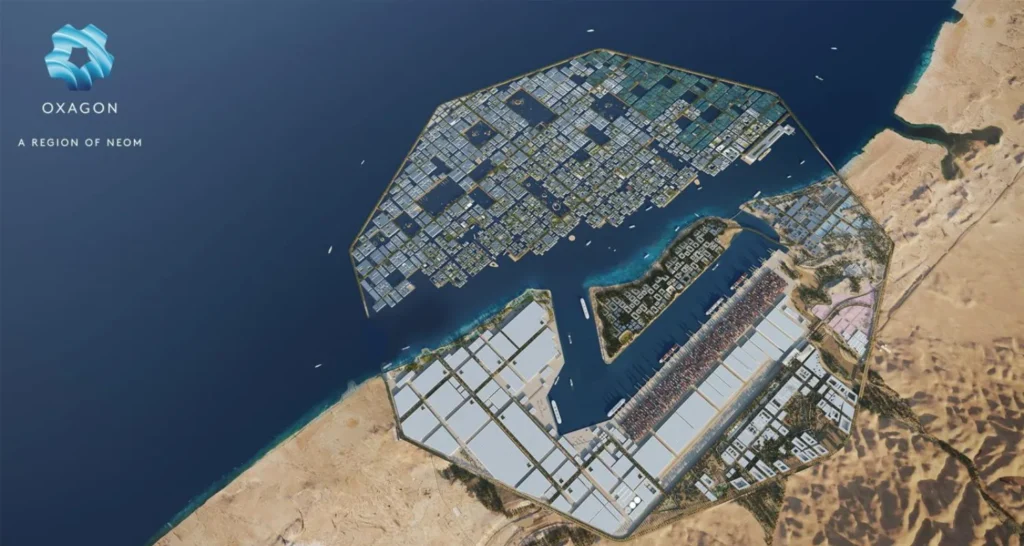Custom production in “factories” of the year 2023
The customization approach in factories can be divided into:
“digital” (they use computer engineering technologies, primarily digital modeling and design of both the products or products themselves and manufacturing processes throughout the life cycle); “smart” (their automated process and production control systems allow for rapid reconfiguration of equipment without human intervention)
“virtual” (represent distributed networks of “digital” and “smart” factories interconnected based on global supply chain and production asset management technologies).
Effects
- Creation of high-tech jobs
- Increased customization of products
- Shorter time to market for finished products
- Significant increases in automation, productivity, environmental friendliness, and energy efficiency of production facilities
Computer Engineering (CI) Technologies
Mathematical modeling of products with the help of CI systems allows for reducing in the share of defects in the finished product due to the reduction of unnecessary production operations and elimination of errors in technical documentation. QI systems are used in almost all areas of modern manufacturing, including mechanical engineering, electronics manufacturing, design, and architecture, and their range of applications is expanding due to the outlined democratization in this field of development.
Effects
- Shorter development and design times for new products
- Decree on the share of defects in the finished products
- Decrease in production costs (due to the high-technology virtual models instead of expensive real prototypes)
- Stimulation of the development of “factories of the future” – the main component of the digital economy
- Significant increase in the economic efficiency of existing production facilities and new-generation enterprises

Additive technologies
Additive technologies based on layer-by-layer buildup (synthesis) of polymers, metals, and composites make it possible to create products of complex geometric shapes and profiles with a material utilization factor close to 1, which saves over 70% of raw materials. The introduction of additive technologies makes it possible to create a prototype in a short time and deploy the production of customized products. They are increasingly used in various fields (mechanical engineering, aerospace, metallurgy, biomedicine, high-strength ceramics, prototyping in design and architecture, etc.).
Effects
- Creation of customized products, including complex shapes
- Considerable reduction in time for design and prototyping
- Improved product quality with a simultaneous reduction in production costs
- Minimization of environmental risks related to production
- Decrease in the consumption of materials required for the creation of products
Future indexes development 2023
Look around yourself. What will you see? Tables, chairs, other furniture, doors, television, wardrobe, and many other artificial things. These things are developed from raw materials which different industries finished themselves into final goods like chairs and tables. In this section, we are going to know the factors of production.
Production definition
It is a process of blending multiple inputs to make something usable, something capable of consumption. Production is an outcome of economic activity. For producing things, we need some tangible and intangible materials.
These materials are the factors of production. Consider a simple example of paper crafting. To make origami, we need paper, money to buy it, and the most important technique of folding. Let us understand what we mean by the factors of production and their types that we know from commercial trading sources and some additional areas described by the Smart City Enterprise team.
Types of Factors of Production
Factors of production have been categorized into four general types. In this article, we are calling them Primary factors of production. Land, labor, and capital as factors of production were originally identified by early political economists such as Adam Smith or Karl Marx. Production, such as in manufacturing, can be tracked by certain indexes.
Primary factors of production
Land as a Factor of Production
The land is a broad term that includes all the natural resources found on lands, such as oil, gold, wood, water, and vegetation. Natural resources can be divided into renewable and non-renewable resources.
- Renewable resources can be replenished, such as water, vegetation, wind energy, and solar energy.
- Non-renewable resources consist of resources depleted in supply, such as oil, coal, and natural gas.
Whether renewable or non-renewable, all resources can be used as inputs in production to produce a good or service. The income that comes from using land and its natural resources is referred to as rent.
Besides using its natural resources, land can also be utilized for various purposes, such as agriculture, residential housing, or commercial buildings. However, land differs from the other factors of production because some natural resources are limited in quantity, so cannot be increased with demand.
Labor as a Factor of Production
Labor as a factor of production refers to the effort that individuals exert when they produce a good or service. Labor includes all types of labor performed for an economic reward, such as mental and physical exertion. However, the value of labor also depends on human capital, determined by the individual’s skills, training, education, and productivity. Productivity is measured by the amount of output someone can produce in each hour of work. The income that comes from labor is referred to as wages. Note that work performed by an individual purely for their interest is not considered to be labor in an economic context. The following are several characteristics of labor in terms of being a factor of production:
- First, labor is considered heterogeneous, which refers to how the efficiency and quality of work are different for each person. It differs because it depends on an individual’s unique skills, knowledge, motivation, work environment, and work satisfaction.
- Additionally, labor is also perishable which means that labor cannot be stored or saved up. If an employee does not do that today, the lost time cannot be recovered the next business day.
- Another characteristic of labor is that it is strongly associated with human efforts. It means that factors play an important role in labor, such as the flexibility of work schedules, fair treatment of employees, and safe working conditions.
Capital as a Factor of Production
Capital – manufactured or man-made resources, as a factor of production, refers to the money used to purchase items used to produce goods and services. For example, a company that purchases a factory to produce goods or a truck purchased to do construction is considered capital goods. Examples of capital goods include computers, machines, properties, equipment, commercial buildings, and public infrastructure.
- Capital is different from the first two factors because humans create it. For example, capital goods like machines and equipment are created by individuals, unlike land and natural resources.
- Additionally, capital is also a factor that can last a long time, but it depreciates over time. For example, a building is a capital good that can endure for a long period, but its value will diminish as it gets older.
- Capital is also considered mobile because it can be transported to different places, such as computers and other equipment.
Entrepreneurship as a Factor of Production
Entrepreneurship as a factor of production is a combination of the other three factors. Entrepreneurs use land, labor, and capital to produce a good or service for consumers. Entrepreneurship is involved with establishing innovative ideas and putting that into action by planning and organizing production. Entrepreneurs are important because they are the ones taking the risk of the business and identifying potential opportunities. The income that entrepreneurs earn is called profit. Entrepreneurs (individuals who bring factors of production together:
- Self-employed
- People who start businesses
- Finance – Entrepreneurs need access to money – either savings or loans from banks to get started.
Secondary factors of production
Knowledge
the skills and abilities of workers. For example, a doctor who spent 15 years studying medicine is more productive than non-skilled workers.
State of technology
Some schools of economics consider technological development to be a factor of production. It will influence the effectiveness of capital investment.
Social capital
The coherence of society. Is there trust and working legal systems which enable entrepreneurs to have greater faith in setting up a business
Cultural heritage
If there is a strong tradition of investment and business, it is easier to replicate past business models.
Technology’s Role in Production
In new high-tech industries such as software development. The most important factor is human capital – the experience, education, and skills of the workers. There is scope for the individual or small team to set up a business to focus on a small aspect of developing new software. This industry may not need any land – the entrepreneur could work from home or an internet cafe.
While it is not directly listed as a factor, technology plays an important role in influencing production. In this context, technology has a fairly broad definition and can refer to software, hardware, or a combination of both used to streamline organizational or manufacturing processes.
Increasingly, technology is responsible for the difference in efficiency between firms. To that end, technology, like money, is a facilitator of the factors of production. Thus, the introduction of technology into a labor or capital process makes it more efficient. For example, the use of robots in manufacturing has the potential to improve productivity and output. Similarly, the use of kiosks in self-serve restaurants can help firms cut back on their labor costs. Total Factor Productivity (TFP), which measures the residual output that remains unaccounted for from the four factors of production, increases when technological processes or equipment are applied to production. Economists consider TFP to be the main factor driving economic growth for a country. Thus, the more a firm or country’s total factor productivity, the more its growth.
Frequently asked questions
Following few questions raising our customers during initial calls related to Smart City Enterprise services and basic answers.
1. What are the factors of production?
The factors of production are an important economic concept outlining the elements needed to produce a good or service for sale. They are commonly broken down into four elements: land, labor, capital, and entrepreneurship. However, commentators sometimes refer to labor and capital as the two primary factors of production. Depending on the specific circumstances, one or more factors of production might be more important than the others.
2. What are examples of the factors of production?
Land refers to physical lands, such as the acres used for a farm or the city block on which a building is constructed. The land is an important factor for enterprises that rely on real estate such as farming or office buildings. Labor refers to all wage-earning activities, such as the work of professionals, retail workers, etc. Entrepreneurship refers to the initiatives taken by entrepreneurs, who typically begin as the first workers in their firms and then gradually employ other factors of production to grow their businesses. Lastly, capital refers to the cash, equipment, and other assets needed to start or grow a business.
3. Are all factors of production equally important?
Depending on the context, some factors of production might be more important than others. For example, a software company that relies primarily on the labor of skilled software engineers might see labor as its most valuable factor of production. By contrast, a company that makes its money from building and renting out office space might see land and capital as its most valuable factors. Moreover, as the demands of a business change over time, the relative importance of the factors of production will also change accordingly.













